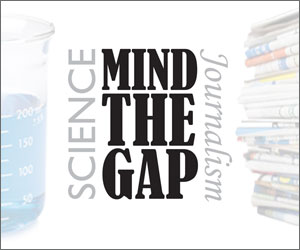To Boldly Go Where No Worm Has Gone Before
by
 Actually the first nematode worm was blasted into space on April 16th, 1972, aboard Apollo 16. But the most recent celestial trip made by Caenorhabditis elegans was on a mission: To find out if RNA interference (RNAi) works in space.
Actually the first nematode worm was blasted into space on April 16th, 1972, aboard Apollo 16. But the most recent celestial trip made by Caenorhabditis elegans was on a mission: To find out if RNA interference (RNAi) works in space.
I have no doubt you just expelled a mouthful of air in disdain and said to yourself “why do we care if RNAi works in space?”. Well, first of all, shame on you for losing your sense of curiosity and wonder. And secondly, it’s because RNAi as a therapeutic strategy holds significant potential in the treatment of the negative effects of space travel.
One of the many reasons human beings have yet to set foot on Mars is that by the time we’d get there our bodies would be in rough shape. Using current spaceflight technologies it would take us about 260 days to get to Mars, and such an extended period of weightlessness would have a major effect on the traveling astronauts’ bodies. For example, studies performed on cosmonauts and astronauts who spent months aboard the space station Mir showed that bone mass decreased at a rate of 1-2% per month. Other space-related problems include a weakening of the immune system, anemia, and, perhaps most disturbingly, excessive flatulence.
In a recent report published in PLoS ONE, Timothy Etheridge and co. set out to investigate if RNAi techniques could be exploited to alleviate muscle atrophy during spaceflight. To do this they sent C. elegans larvae into space where they were allowed to grow and develop over a period of eight days. For C. elegans, the RNAi pathway (a gene regulatory system comprised of small RNA molecules and specific proteins) is required for correct larval development. When the worms returned from space the authors compared the amount of RNAi components produced to a “ground control” sample (seriously, that’s what they called it) of worms that had remained in the lab. They saw no difference between the two samples, suggesting that, since all the necessary components were being expressed, RNAi could probably function in space.
The next step was of course to ask whether RNAi could be exploited to perform a programmable function in space. RNAi effector molecules that targeted lysosomal cathepsins were expressed and these genes were subsequently silenced. The authors proposed that with these genes turned off muscle atrophy would be slowed, or even stopped, since these enzymes are responsible for muscle actin degradation. Sure enough, they were right.
These experiments are clearly preliminary; we are after all only very distantly related to nematode worms. However this wouldn’t be the first time we’d learned something practical from the animals we’ve sent into space.
Fruit flies were the first animals that went rocketing heavenward back in 1948. Upon their successful return to earth the bugs were examined to determine the effects of cosmic radiation on terrestrial life. After that, Russia sent up a bunch of dogs (most famously Laika, the first animal to obit the earth, in 1957), and the U.S. sent several monkeys, with varying success, in order to figure out what kind of launch and re-entry conditions their bodies could handle. All of which set the stage for Yury Gagarin to become the first human in space in 1961.
So there you go, my cynical friends. Sending animals into space has been, and probably always will be, the first step in understanding how human beings will fair outside of our protective atmosphere.
.
Katie Pratt is a graduate student in Molecular Biology at Brown University. She has a passion for science communication, and in an attempt to bring hardcore biology and medicine to everyone, she blogs jargon-free at www.katiephd.com. Follow her escapades in the lab and online on Twitter.
.
.
Be the first one to mind the gap by leaving the animal’s name as a comment and get your name in the blog along with a sweet new BenchFly mug!
.
UPDATE: Congratulations to Alejandro Montenegro Montero – winner of this week’s Mind the Gap!
About the winner: Alejandro is a PhD student at Pontificia Universidad Católica de Chile, where he studies the molecular basis of circadian rhythms using Neurospora crassa as a model (as you would imagine). He blogs at The MolBio Hut.
.
.
About the prize: In addition to fame and glory beyond their wildest dreams, winners receive our new hot-off-the-presses large (15 oz) BenchFly mug to help quench their unending thirst for scientific knowledge… or coffee.

.
Miss a previous edition of Mind the Gap? We’ve got you covered:
Another One Bites the Dust: Rinderpest Eradicated
Scientists Just Wanna Have Fun (Like Uncaged Monkeys)
Mosquitoes Eating You Alive? Cheesy Feet Could be the Problem
Dirty Mouth? Clean it Up with Cancer Screening
Because in Space…It’s Always 5 O’Clock Somewhere
Curry: Now Good for Detecting Explosions, Not Just Causing Them
So You Thought Eating Poop Was Bad For You?
Are Fatty Acids the Cure for PMS?
Botanical Sleuthing Recovered Endangered Daisy
.
.
.


amontenegro
wrote on June 24, 2011 at 11:05 am
Laika
alan@benchfly
wrote on June 24, 2011 at 11:15 am
We've got a winner!
Anne
wrote on June 24, 2011 at 11:12 am
The first dog in space was named Laika
Bill Feger
wrote on June 24, 2011 at 11:15 am
Laika
First dog in Space.